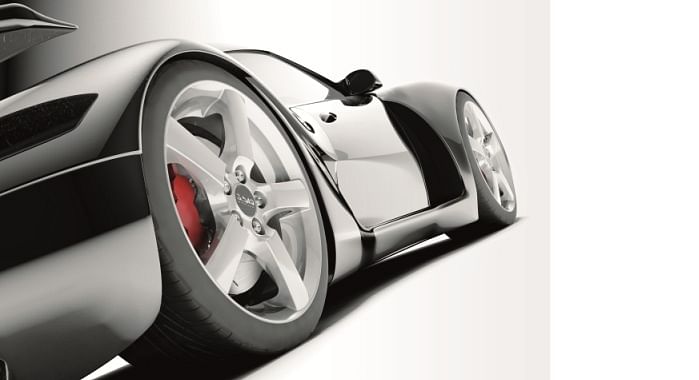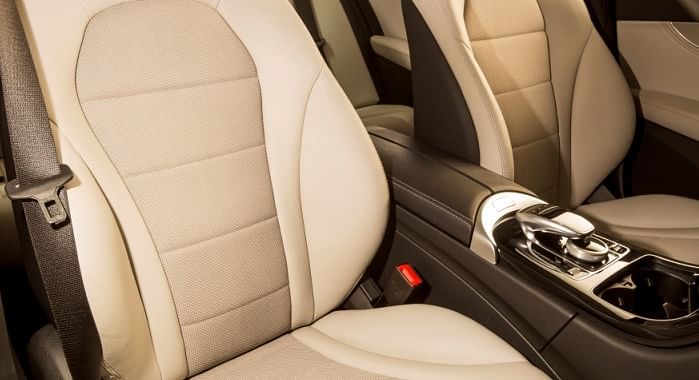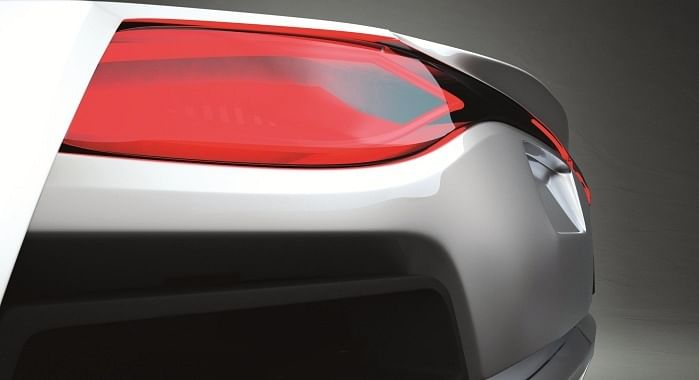'Trimming a car’s weight by one-tenth can boost fuel economy by 6-8 percent.'
Covestro India's Ajay Durrani, reveals how the use of polycarbonate composites can reduce weight in vehicles and why he welcomes Bharat NCAP crash norms.
Ajay Durrani, the managing director of Covestro India reveals how the use of polycarbonate composites can significantly reduce weight in vehicles, the need for the engineering plastics industry to come up with more compelling value propositions to overcome the metal mindset in the value chain in India, and why he welcomes Bharat NCAP crash norms. An interview by Ajit Dalvi.
The automotive vertical is the leading — if not the largest —contributor to Covestro’s global revenues (12.1 billion euros in 2015). How much does the automotive business in India contribute to global revenues and how do you foresee growth in India in the near term?
India is a promising market for Covestro in the APAC region. Here, the automotive sector contributes to around 40 percent of the business. We believe the Indian automotive market is at the cusp of transformation. The sector has been witnessing healthy growth, especially in the passenger vehicle segment. With the advent of the compact and luxury SUV segment, India is slowly set to become one of the biggest passenger vehicle markets in the world.
For Covestro, it means more opportunities to innovate and work closely with the industry in providing sustainable solutions to customer needs. We are confident that in the times to come, the volume of business will see an upward curve.
What are the growth drivers for your India business?
India is a growing economy with a thriving automotive market. While there are several factors that are influencing the growth in the market, a big chunk of this is dependent on customer behaviour. Broadly, we can classify this behaviour into three profiles of customers:
The ‘mileage consumer’:
Fuel efficiency of automobiles is one of the primary drivers for the Indian customer to make a purchase decision.
Thus, automakers are constantly looking for solutions to reduce vehicle weight which helps in improving fuel economy.
The endeavour is to reduce the weight of the car by 20-25kg. Covestro has been working with several key global automotive manufacturers to utilise polymer composite solutions in their lightweighting initiatives.
The ‘appearance-matters-too consumer’:
Due to the rise of millennials and higher disposable income of this demographic, the aesthetic value of a car has also begun to feature as one of the pre-requisites while purchasing a car. Whether matte or glossy, in serene blue or audacious bright red, the finish is often the first thing you notice about a car. It is based on polyurethanes and coating produced by companies such as Covestro.
Nowadays, a car’s finish does more than making it look good. It is more focused on sustaining that finish in the long run. While aesthetics is an important part of these solutions, the core functionality is to protect against rust, stone chippings and the vagaries of the weather. And specialty solutions from Covestro are extremely intelligent, too. Thanks to a special development from Covestro that enables it to ‘remember’ its original structure, it can even make small scratches vanish automatically.
The ‘comfort consumer’:
Polymers contribute not only to the exterior of the car but make it look chic from the interiors. Covestro offers numerous materials for vehicle interiors that combine style and comfort with functionality; soft-feel coatings are used for pleasantly velvety surfaces for applications such as handles, fittings and switches. They don’t scratch easily either, and offer excellent resistance to chemicals, cosmetics and detergents.
Which specific vehicle segments does Covestro India target in terms of offering lightweighting benefits?
Building vehicles with lighter materials is one approach: trimming a car’s weight by one-tenth can boost fuel economy by 6-8 percent. A number of products like front end modules, bumper beams, footrests, battery trays, gear shifter adapters, bus seat assemblies and panel replacements in LCVs are finding increasing usage of polymer composites, short and long fibres and injection moulded applications.
What are the product innovations that Covestro brings to the Indian market?
Innovation is one of the pillars of current and future business success; Covestro has around 1,000 researchers and developers working at its innovation centres around the world. For instance, Covestro now manufactures polyols using CO2 as a fuel. Using advanced chemistry, we have been able to replace 20 percent of the petroleum used for manufacturing polyols with CO2. These polyols are used in manufacturing polyurethane foams which are used in car interiors and upholstery. We are currently trying to increase the share of CO2 in the process to as much as 50 percent.
Globally, automotive glazing has emerged as a key trend in the automotive industry. Thermoplastic composites based on polycarbonate resins are increasingly turning into an alternative to metal and other plastic composite solutions.

Large, transparent surfaces like panoramic roofs, transparent body panels or side/rear windows are becoming increasingly popular in the automotive industry.
A polycarbonate panoramic roof cuts weight by up to 50 percent compared to glass roofs, resulting in a marked decrease in CO2 emissions. Since these materials are twice as strong as metal and half the weight, the high impact resistance of polycarbonate also offers a vital safety benefit. There is great potential for functional integration, and the design freedom allows new forming possibilities.
The lightweight attribute is very critical for the automotive industry as polycarbonate composites are capable of significantly reducing weight and making vehicles more efficient when used in door panels, body panels and seat backs.
How open are OEMs and component suppliers when it comes to using high-performance polymers which are both strong as well as light?
Reports suggest that the number of cars plying on roads will quadruple by 2050. The impact of this on CO2 emissions is anybody’s guess. Products from Covestro help in the construction of lightweight vehicles and in reducing fuel consumption. The auto industry contributes the largest share to our business (22%) globally and therefore, we are investing much in understanding the industry, to become more aware of the trends as they shape up, and be ready with timely solutions. For this, we work very closely with OEMs across the world with a keen focus on delivering solutions befitting the regional market preferences and trends.

Covestro's solutions when used in door panels, body panels and seat backs significantly reduce weight, in turn making vehicles more efficient.
Globally, OEMS are increasingly looking at not only lightweighting but accentuating design freedom and efficiency as part of their key deliverables. Whether protection, appearance), interior (comfortable, customised or functional) or electric mobility (greater mileage through less weight), each component is constantly evolving with time and Covestro is investing into solutions which answer the needs arising from these trends. India is a huge automotive market and hence, OEMs too are eager to introduce technologically superior materials to boost efficiency of their products.
Are you already leveraging your international relationships with global OEMs in India?
Covestro has been a partner for excellence to many global OEMs. In India, the market is huge and has a large presence of OEMs looking at technologically superior materials. While we continue to nurture and extend our relationship with global OEMs in India, we are also expanding our reach to several India-specific OEMs too.
How open are Indian OEMs when it comes to adopting vehicle lightweighting compared to their global counterparts?
Technical capability and innovation focus of the automotive value chain is still limited. However, the last five years have seen a lot of MNC Tier 1 suppliers entering India and setting up manufacturing plants as well as investing in improving their R&D footprint in the country. Indian Tier 1 suppliers are getting access to design capability and technology either via JVs, technical collaboration and acquisitions abroad.
There is still a lot of metal mindset in the entire value chain and the engineering plastic industry needs to further step up on coming with more compelling value propositions, supported by modern simulations and capable R&D setup, to overcome this mindset issue.
How are the cost pressures dealt with while chasing weight reduction and similar technologies?
India is a price-sensitive but quality-driven market. There is growing concern about CO2 emissions and the awareness among the OEMs, automotive manufacturers, coupled with stringent government regulations, is driving lightweighting initiatives.
What are the top three key areas within technologies surrounding polymers to cut vehicle weight in a cost- efficient manner?
Cars of the future will be ultra-light, energy saving and have a futuristic design with smooth, high-quality surfaces. High-tech engineering thermoplastics will be instrumental in taking these concepts from the drawing board to the showroom floor. Coatable composites with a polycarbonate matrix are a perfect fit for these challenges.
Currently, the car body, engine, windshield and battery are a few specific sections where polymers are fueling lightweighting initiatives. Polycarbonate and polycarbonate blends provide automotive designers and engineers with lightweight, high-performing engineering thermoplastics that make eye-catching design possible and contribute to vehicle fuel efficiency by reduced vehicle weight.

Coatable composites with a polycarbonate matrix facilitate design with smooth, high-quality surfaces.
Covestro polycarbonates offer numerous benefits, including part integration, reduced component weight and design freedom beyond classical steel and glass solutions, while also having a glass-like appearance. Panoramic roofs using Makrolon polycarbonate glazing and Bayblend (PC+ABS, PC+ASA blend) frames can reduce component weight by up to 50 percent compared to glass. Not only do polycarbonates reduce the weight of vehicle components by up to 50 percent, but they also help in cutting fuel consumption and CO2 emissions while improving strength, safety and style.
Polycarbonate special blends enable vehicle front grilles and trim parts to be formed in one mould. Subsequent operations can provide finishing effects such as matte black or metallisation. Mirrors, bezels, spoilers and other exterior trim parts formed from using such materials offer selectively high resistance to fuel, oil, grease and other chemicals, while also providing excellent dimensional stability and toughness.
What sort of a business opportunity will the upcoming Bharat NCAP crash norms provide to Covestro? Are you readying any specific cost-effective solutions for OEMs to meet the stringent norms?
In the 1980s, metal was used widely to account for the sturdiness and safety of vehicles. However, with the rising need to make cars more fuel efficient and aerodynamic, reinforced plastic began to gain importance. With the Bharat NCAP norms, we expect polymers will play a bigger role since carbon- reinforced polymers are stronger than steel and half the weight of aluminium.
This interview was first published in Autocar Professional's November 1, 2016, 'Lightweighting Special' issue.
Recommended:
- Covestro's weight-loss plan for Indian auto industry
- Hella and Covestro reveal new vehicle lighting solution with holographic tech
RELATED ARTICLES
India: A Bastion Of Stability for Schaeffler
German autoparts maker Schaeffler’s CEO, Klaus Rosenfeld, describes India’s role in the company’s €24-25 billion empire....
'No Question of Us Being Late' - Suzuki India on e-2Wheeler Market
Suzuki Motorcycle India believes its EV entry is timely as the market is now mature enough to grow off genuine demand ra...
'India Can Become a Major Pillar for Us' - Marquardt Group
Björn Twiehaus, CEO of Marquardt Group, and Vishal Narvekar, the company's India GM, share their outlook on the Indian m...





 By Ajit Dalvi
By Ajit Dalvi
 22 Nov 2016
22 Nov 2016
 8917 Views
8917 Views





 Ketan Thakkar
Ketan Thakkar


 Angitha Suresh
Angitha Suresh

 Darshan Nakhwa
Darshan Nakhwa

